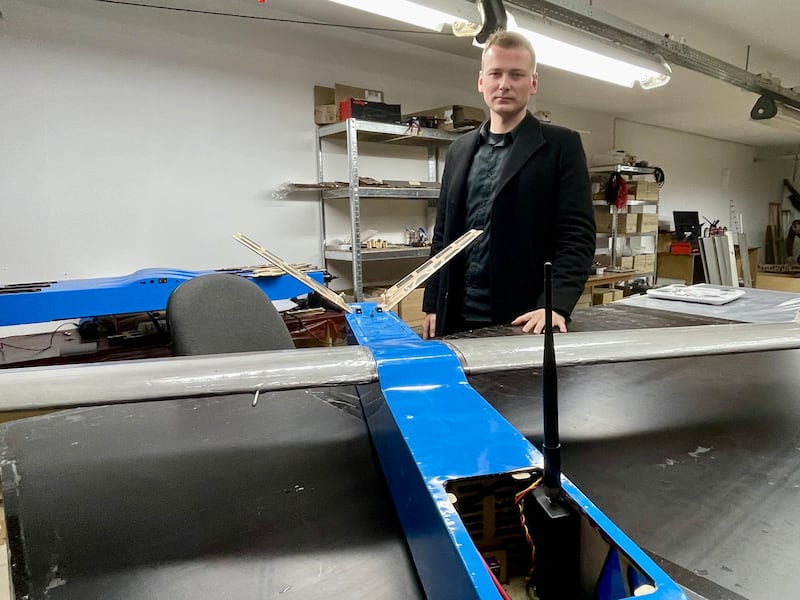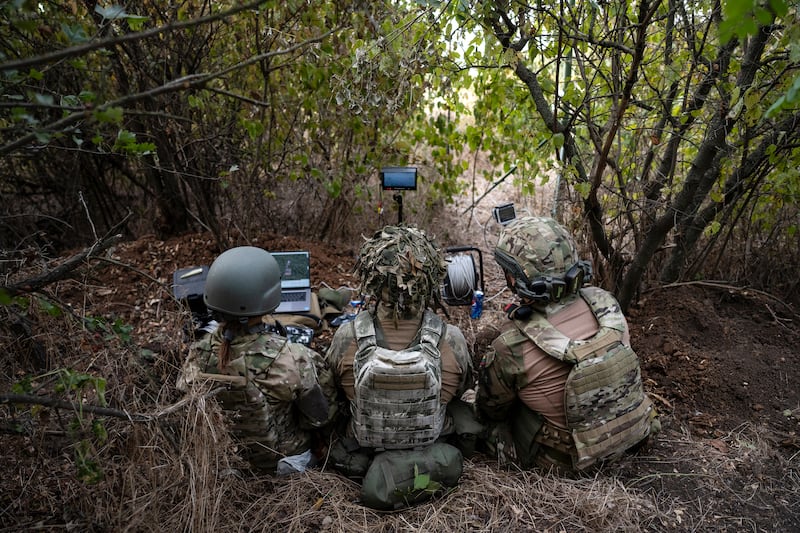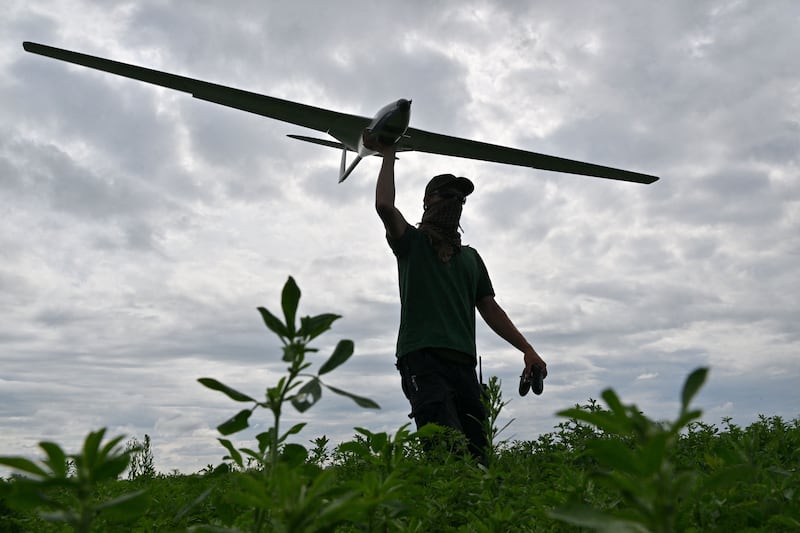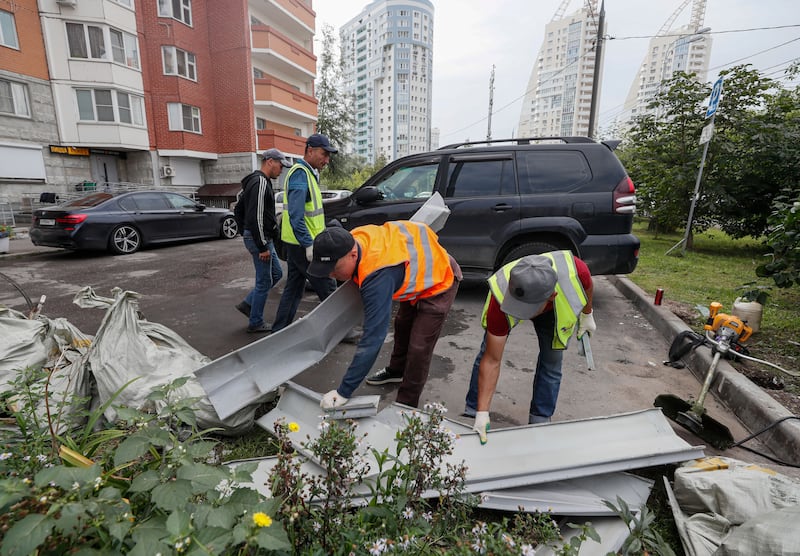Any Ukrainians who doubted the wisdom of their country’s pledge to build a million drones for the military this year may have been convinced by recent events on the battlefield and far beyond.
In the last month, long-range Ukrainian aerial drones have set fire to big Russian fuel facilities from St Petersburg on the Baltic to Tuapse on the Black Sea, and a shoal of explosive marine drones sank Russia’s Ivanovets warship on the coast of occupied Crimea.
Ukraine’s soldiers are bogged down and under pressure in areas of the east, but their drones still destroy enemy troops and armour every day and send footage of the strikes back to base. It is then uploaded to social media, where it cheers many people in a country that has been terrorised for nearly two years by Russia’s full-scale invasion.
Fighting a goliath that has more of most of what is needed to win a war – troops, workers, weapons, money, factories, natural resources – it is tempting for Ukrainians to see drones as a magic bullet: many are relatively cheap, quick and easy to build and can cause millions of euro of damage in one strike; their remote operation reduces risk to their operators; and in this rapidly changing field, innovation may – at least for a while – be a match for sheer industrial might.
RM Block
Importantly, drones are also something that Ukrainians can make for themselves and – as Europe falls far short of its target for ammunition supplies to Kyiv, and political deadlock in Washington halts US military aid – thousands of people are doing just that.

The drones are put together in a spartan Lviv workshop by Shemechko (27), a few colleagues and a handful of volunteers who are twice his age and have no technical expertise, except for the grandfather of a friend who can solder
Roman Shemechko was studying at a flight academy and hoped to become an air traffic controller and pilot before Russia’s all-out attack in February 2022. He joined a territorial defence unit in his home city of Lviv, and to raise cash he planned to sell a “stealth reconnaissance” drone that he had built for fun in his spare time.
Then, fortuitously, he met people who saw the wartime potential of new drones and were ready to help foot the bill for the requisite test flights and inevitable crashes. Now their small firm, called Besomar (White Demon), is putting its first drone through the defence ministry’s certification process, and Shemechko is as good as certain that it will be approved for deployment with the military in a couple of months.
The drone has a range of 30km and can carry a 2kg payload – which could be medical supplies, food, water, ammunition or other essentials – to soldiers on the battlefield. It can also drop explosives on the enemy, carries one or two cameras, and can overcome powerful signal and GPS jamming by Russian forces.
“What was a volunteer project with our, and our friends’, money now has some state funding to improve the drone and increase production. It’s light and relatively cheap – about $2,500 – $3,500 (€2,325 – €3,254) and ... it’s been tested at the front and now we fixed the issues that came up,” Shemechko says.
“I’m 100 per cent sure it will work for the military,” he adds. “We’ve crashed about 40 and we have about 40 flying now. We’re scaling up to be able to build 20 a month and we hope to make hundreds every month in the end.”
Shemechko is also developing two types of longer-range surveillance drone, a basic decoy drone to draw enemy fire, and a fast air-defence drone that could chase and destroy the powerful Iranian-made Shahed drones that Russia fires at Ukrainian cities and infrastructure nearly every night.
The drones are put together in a spartan Lviv workshop by Shemechko (27), a few colleagues and a handful of volunteers who are twice his age and have no technical expertise, except for the grandfather of a friend who can solder. The only sign of Besomar’s presence on the busy street outside is a discreet fingerprint entry scanner on the gate.

Ukraine now has scores of similar workshops, and new start-ups are emerging every week to meet the military’s demand for hundreds of thousands of explosive-laden first-person view (FPV) drones that an operator flies into a target – often a tank or enemy position – using a headset that gives him a live drone’s-eye view of the battlefield.
Ukraine says it now has some 200 registered drone makers building 67 types of drone that are certified for military use, compared to just seven models in 2022; rising investment and shrinking red tape have helped national drone production increase 100-fold in the past two years.
The country must also spend heavily to train thousands of people to fly them, says “Rezhiser” (“Director”), a military drone operator in the partly occupied Donetsk region, who took his call sign from his pre-war job as a maker of adverts and corporate films.
“It’s a complex job. You must know the terrain and understand where jamming stations are and how to evade them. You must have good skills and be able to make quick decisions and be very stress resistant – it’s easier to make drones than to train people to use them well,” he says.

Rezhiser is also sceptical about the furore around FPV drones, the fast, cheap (approximately €450), single-use drones that can be seen slamming into tanks, enemy bunkers and chasing Russian soldiers across the battlefield in countless clips posted online.
“Since FPV drones have been developing, anti-drone measures have also been developing, and the success rate for FPVs is not very high; the clips you see might be from one in a hundred flights. A pilot could do five or six flights a day and half might fail,” he says by phone from Donetsk region.
“An FPV drone is cheaper than a shell, but it’s not a panacea. You can’t replace artillery completely with FPV drones because they don’t carry a big explosive – you can stop a tank with an FPV drone but you need something heavier to destroy it,” he adds.
Rezhiser says Ukraine’s reliance on an army of small start-ups rather than the kind of industrial-scale production that Russia has launched also limits the number of drones it can make and hinders quality control. He would prefer to see more focus on building larger bomber drones that can locate a target, drop a 10kg landmine on it and fly back to base.
“The state is saying that we’ll build a million drones this year – if that’s a million FPVs made in someone’s kitchen then it’s nothing. But if it includes something heavier, then it might be great,” he says.

As with all aspects of Europe’s biggest conflict in 80 years, Ukraine is seeking help in drone warfare from western allies who in turn learn from the experience.
“We are constantly in touch with [international] partners and they clearly understand our request for technology. Not everything can be discussed publicly, because this technology gives us a competitive advantage on the battlefield,” Ukraine’s minister for digital transformation, Mykhailo Fedorov, told his country’s New Voice newspaper this week.
“Many firms are working on technology related to AI [artificial intelligence], target acquisition and tracking. We receive such models for testing or even for combat trials. After this, we provide valuable feedback for improvement. For western firms, this is an ideal environment for testing their latest technology.”
President Volodymyr Zelenskiy underscored Ukraine’s commitment to drone technology on Tuesday by announcing the creation of the Unmanned Systems Forces as a new branch of the country’s military.
“Drones – unmanned systems – have proven their effectiveness in battles on land, in the sky and at sea. Ukraine has truly changed the security situation in the Black Sea with the help of drones. Repelling ground assaults is primarily the task of drones,” he said.
“The current list of tasks is clear: special staff positions for drone operations, special units, effective training, systematisation of experience, constant scaling of production, and the involvement of the best ideas and top specialists in this field.”

Russia’s drones are also feared on the battlefield, and it is increasing production of several models, including its own version of the Shaheds that have badly damaged Ukraine’s energy and other infrastructure, and killed and injured hundreds of civilians in strikes on residential areas.
“Russia has a much larger economy, many more resources and is capable of building far more drones than we can. And it has China right next door, so logistics [for drone parts] is faster, and that matters,” Shemechko says.
“Here we have lots of smart people who can come up with quick and innovative solutions ... but we need more funding. Many projects are born but die quickly because of a lack of funds,” he adds.
“I can’t say whether Ukraine or Russia is winning the drone war, but I know we have a lot of potential – as long as we don’t miss the moment.”
- Sign up for push alerts and have the best news, analysis and comment delivered directly to your phone
- Find The Irish Times on WhatsApp and stay up to date
- Our In The News podcast is now published daily – Find the latest episode here






















